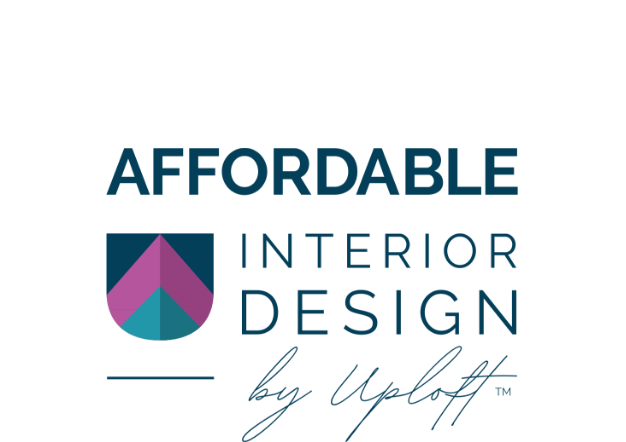I’m so excited to be back with you today, and I am joined by a special guest. You may know Julie Coraccio from her own podcast, Clear Your Clutter. She focuses on the holistic aspect of decluttering, including mental, relationships, health, emotional and spiritual decluttering.
This episode, we discuss…
[2:43] The difference between a designer and an organizer
Designers and organizers have different skill sets, and often designers will tell Julie that they can’t even do their jobs until the spaces are decluttered and organized. As an organizer, Julie doesn’t advise on what colors look good or how to put a room together. She might overlap with designers in a situation with a small apartment, because she loves finding tips and tricks to maximize space. She might recommend a cool ottoman that can store shoes, or a basket for shoes that would look cute in a front entryway. Rather than focusing on color and style, however, organizers focus on functionality.
[5:26] Where to start when working with an organizer
Julie encourages us not to feel shame if we need assistance from an organizer. We all have our areas where we struggle. She shares some questions to consider when thinking about bringing an organizer in.
Do you have an impending deadline for something? For example, is the interior designer coming within the next few weeks?
Are you paying bills late?
Do you want to fight health issues by clearing out your kitchen so you can cook healthy meals?
Is something in your home driving you nuts?
Are you unable to relax and find peace in your home?
Your answers to some or all of these questions should guide whether or not you think it is time to work with an organizer.
[7:31] How to know if you should be hiring a professional organizer
Once you have thought about your answers to those questions, you can consider how long you have been disorganized. If you keep telling yourself you are going to get to the clutter someday, and someday never comes, it might be time to consider bringing in help. If you make a deadline and don’t meet it, or if you have been putting it off for years, now is the time. When your life gets really busy, that is when you need to delegate. You can always work side by side with someone, and Julie recommends that as the best strategy. She likes to teach people skills, and she prefers for her clients to be involved.
When hiring an organizer, it’s important to find a good fit. Julie recommends free 15-minute consultation, and she prefers to meet face to face even if it is over Zoom. She can get a good sense of personality match and whether or not she has the skill set they need. She doesn’t work with hoarders, for example. You really need special training in that. You will be spending a lot of time with your clients, so you want it to be a good match in both personality and skill set. You also want to work with an organizer who won’t judge you, and who you will enjoy spending time with over the course of the project.
[9:34] Determining the timeline for an organization project
The timeline can really depend on how much stuff there is. Julie prefers to work in four-hour chunks. It’s enough time to make some progress without burning out or getting frustrated. It drives her crazy when you see shows on TV where all the organization is done in 48 minutes with commercials. They don’t show you the three or four weeks it actually takes, nor do they show you the prep time. People seem to have this misconception that it will be done quickly, and that isn’t how it happens in reality.
[11:03] What to look for when hiring a professional organizer
Price often means a lot to people, so it can be important to compare based on your area. Julie also recommends working with someone who has a contractor agreement. Everything should be laid out so you and the organizer know the scope of the project and what the expectations are. You might also want to consider what kind of training or experience the person has. Julie, for example, is very passionate about sustainable organizing. If that is important to you, then looking at referrals might be the next step. It often boils down to having someone with the skill set that you need and that you enjoy being around. You are going to be spending a lot of time together and it’s helpful if you are on the same wavelength. Finding someone caring and nonjudgmental is really important.
[13:27] Sustainable organizing
Sustainable organizing is Julie’s passion. Even if you aren’t into the environment or going green, it can save you time and money right off the bat. You can use something around your home that you already have, rather than buying something new. Or, you can go to a thrift shop and find something instead of buying a new container. Sustainable organizing involves being aware of the recycling laws in your area as you declutter. You can also have a lot of fun repurposing things, which might be another area where an interior designer and an organizer might overlap. Someone might have a really cool piece that would inspire a designer and work well for home organization. It’s about repairing things and keeping them out of the landfill whenever possible.
This idea reminded me of the local Buy Nothing Facebook group I belong to. It’s a great way to pick up some things that you need for a short period of time, and then you can pass things along that you won’t need again. Sustainability is important to think about, especially in a world where we can get whatever we want so easily. Once we have these things, however, it can be much harder to get it out of our houses. Especially in places like New York City, where we have certain disposal laws and all kinds of barriers to getting things out. Even physically, it can be difficult to remove heavy items. You want to be very mindful, even before you get things inside, of how much energy it might take to get it back outside.
Julie points out that sometimes people try to dump these things they don’t want on nonprofits. She shares that if a nonprofit can’t use something, in California they have to pay landfill fees. She also had a friend who grew up in the foster care system who told her there would be nothing worse than getting a hand-me-down puzzle that didn’t have all the pieces. Giving away things that are in bad shape is not always helpful. If it’s stained, torn, or gross, just throw it out. If you wouldn’t give it to a friend or family member, dumping it on a nonprofit is doing them a disservice.
[21:30] Quick tips for kitchen organization
The first thing Julie mentions is the junk drawer. She advises to stop calling it the “junk drawer” based on her spiritual background. What you call something, it becomes. If you call it junk, then it’s junk. It encourages you to just throw stuff in the drawer. If you rename it and give it a purpose, then it is more likely to stay organized. Maybe it will become the mail center. Or if you have a lot of different things that you think have to go in that space, that is a hint that you need to organize better or create categories instead of dumping things. If you don’t want to make a decision, that’s when it goes in the junk drawer. Give it a name, and give it a purpose.
Open shelving is an option for a kitchen, and you can also use wall grids. As for all the kitchen gadgets, often we don’t use many of them. If you have things you use once a month, you’re going to want to put them in an area where you don’t have to access it a lot. You want things you use more frequently to be more accessible.
Another thing to consider is cookbooks and recipe storage in the kitchen. Julie says that we tend to make the same meals over and over again, so we can pick those favorite recipes and upload them into something like Evernote or Google docs and let the cookbooks go. They tend to take up a lot of space.
You also want to make sure that you can use under cabinet space. Putting the paper towel holder and a microwave under the cabinets allows you to maximize the kitchen space.
[24:26] Quick tips for bathroom organization
Julie refers to bathroom items as her “clutter kryptonite”. She is always willing to take a skincare sample. She has repurposed a cake stand to hold her makeup, and the key is to “containerize”. If you put stuff out on the counter, it’s going to fall off or get broken – and of course the stuff will continue to expand into more clutter.
It’s important to use vertical space, including adding shelving behind the toilet. Julie also recommends storage behind the door, which is where she stores makeup that she isn’t using at the time. She loves lazy Susans, which are great for lotions and other containers. They look nice decoratively and are also really useful.
[26:52] Differences in organization between partners
A lot of people struggle with “sentimental clutter”, as they confuse objects with memories. Our memories are in our heads and our hearts, and we don’t usually need the objects to stick around. If necessary, Julie suggests taking pictures and saving them on your computer.
It’s important to find a method that works for you, and to work together with your partner as a team. You both need to determine your motivation as well as the source of any resistance. Partners are usually not being disrespectful if they are resistant to decluttering, and it’s important to get to the deeper reason if you find you aren’t on the same page.
Links:
Connect with Julie Coraccio:
Website:
Book:
https://www.betsyhelmuth.com/my-book
Become a Premium Member:
https://affordableinteriordesign.com/podcast
Submit Your Questions:
https://affordableinteriordesign.com/podcast
Instagram:
https://www.instagram.com/affordableinteriordesign
Facebook:


